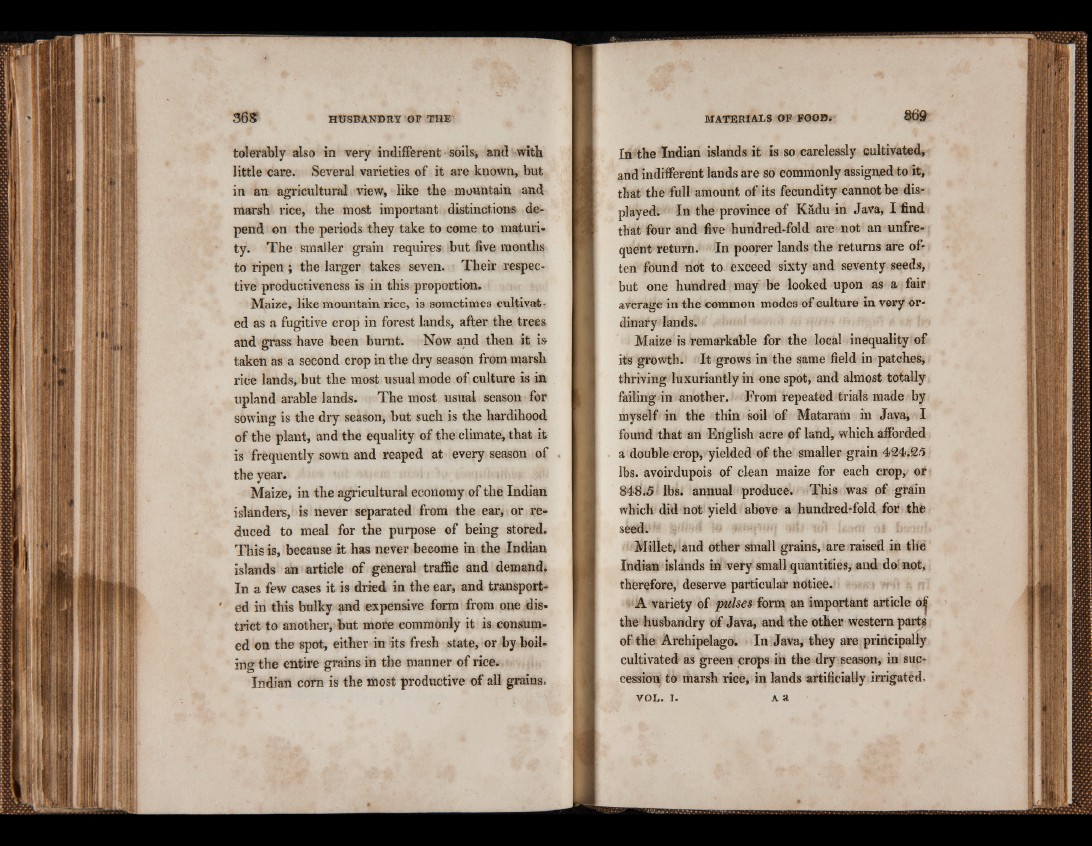
tolerably also in very indifferent soils* and with
little care. Several varieties of it are known, but
in an agricultural view, like tbe mountain and
marsh rice, the most important distinctions depend
on the periods they take to come to maturity.
The smaller grain requires but five months
to ripen ; the larger takes seven. Their respective
productiveness is in this proportion.
Maize, like mountain rice, is sometimes cultivated
as a fugitive crop in forest lands, after the trees
and grass have been burnt.o Now a•nd then it is
taken as a seeond crop in the dry season from marsh
rice lands, but the most usual mode of culture is in
upland arable lands. The most usual season for
sowing is the dry season, but such is the hardihood
of the plant, and the equality of the climate, that it
is frequently sown and reaped at every season of
the year.
Maize, in the agricultural economy of the Indian
islanders, is never separated from the ear, or reduced
to meal for the purpose of being stored.
This is, because it has never become in the Indian
islands an article of general traffic and demand.
In a few cases it is dried in the ear, and transport-
' ed in this bulky and expensive form from one district
to another, but more eommonly it is consumed
on the spot, either in its fresh state, or by boiling
the entire grains in the manner of rice.
Indian corn is the most productive of all grains.
In the Indian islands it is so carelessly cultivated,
and indifferent lands are so commonly assigned to it,
that the full amount of its fecundity cannot be displayed;
In the province of Kâdu in Java, I find
that four and five hundred-fold are not an unfre-
quent return. In poorer lands the returns are often
found not to exceed sixty and seventy seeds,
but one hundred may be looked upon as a fair
average in the common modes of culture in very ordinary
lands.
Maize is remarkable for the local inequality of
its growth. It grows in the same field in patches,
thriving luxuriantly in one spot, and almost totally
failing in another. From repeated trials made by
myself in the thin soil of Mataram in Java, I
found that an English acre of land, which afforded
a double crop, yielded of the smaller grain 424.2.')
lbs. avoirdupois of clean maize for each crop,/ or
848.5 lbs. annual produce. This was of grain
which did not yield above a hundred-fold for thé
seed.
Millet, and other small grains, iare raised in the
Indian islands in very small quantities, and do not,
therefore, deserve particular notice.
A variety of pulses form an important article of
the husbandry of Java, and the other western partjs
of the Archipelago. In Java, they are principally
cultivated as green crops in the dry season, in succession
to marsh rice, in lands artificially irrigated.
v o l . i . a a